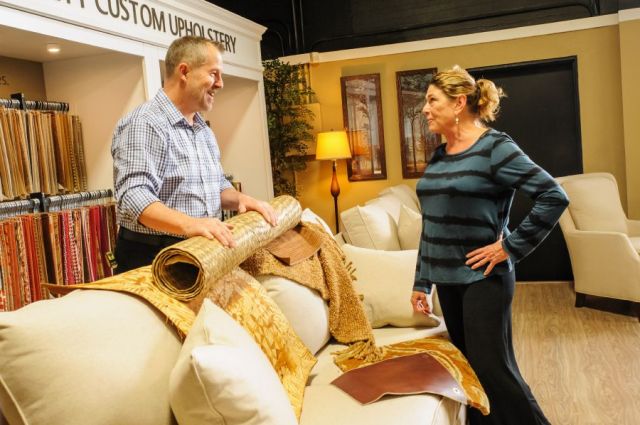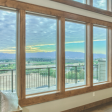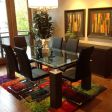

 Spring '24 Issue - Best Of Winners Announced & More
Spring '24 Issue - Best Of Winners Announced & More 
Tuesday, July 14, 2015
Welcome Home - More Than Meets The Eye
Welcome Home
More than meets the eye
Column by Scott Morse, Accessory Buyer for Garrisons Home Furnishings
What you can’t see in textiles is just as important as what you do see when choosing the fabric on your new upholstered furniture. Yet, few shoppers know how to make a value judgement about a fabric beyond what they can see in the way of color, texture and pattern.
Let’s take the mystery and confusion out of selecting the fabric so that you can make a good buying decision with real confidence, and have fun doing it.
How will it wear? And how will it clean? These are the two most common questions. The answers lie in your own personal needs regarding fabric performance. To get solid answers to these questions you should first decide what it is you expect, then tell the salesperson exactly what your fabric performance expectations are. Professional sales-persons in every showroom are the textile experts. They want to assist you in reaching a wise decision. But you have to help them to help you.
What are the basic fabric content choices?
While this is not an all-inclusive list of contents found in upholstery fabrics, these are the basics. Knowing the pros and cons of each will help you in selecting the fabric perfect for you.
Natural fibers—these generally feature flat weaves that are ideal for prints. They are softer and tailor well for upholstered furniture. However, natural products can fade in the direct sunlight and may be susceptible to pilling.
Synthetic fibers—these are made by extruding chemicals into fiber strands. They are more durable and (in general) are more resistant to staining and fading than natural fibers. Synthetic fibers are just as likely to be susceptible to pilling however.
Weaves—When any fiber or blends of fibers are woven together, the visual texture and pattern of the fabric is created. There are two basic methods of weaving upholstery fabrics. Flat weaves and pile weaves. Flat weaves are tweeds, twills and satins. Pile weaves are velvet, plush, terry cloth, velour and corduroy.
How important is knowing the fiber content?
Tell the person assisting you how many children you have and what their ages are. Don’t pretend that they are all perfect if they are accident-prone and are apt to spill their snacks wherever they sit. If the room where the furniture will be used is going to get a lot of activity, as opposed to a seldom-used room, this is important to communicate to your sales-person. Also, if you feel a little insecure of the color, texture and pattern, your professional sales-person is right there to assist you with any of these obstacles.
Why are fibers blended?
Each fiber, natural or man-made, has unique properties. Blending of fibers takes advantage of these properties and can make for a more exciting fabric than a single fiber might provide.
No families live the same way. An adult couple that entertains very little probably does not have the same need for a durable heavy-duty type fabric as would a growing family with several active youngsters. A more delicate fabric might last a very long time in an “adult” home because of the environment and way the furniture is used.
Events & Promotions
Apr
26
Apr
27
Apr
28
Central Point
Charlee Prayers & The Double Dares play Rellik
Charlee Prayers & The Double Dares play Rellik
Apr
29
May
03
Gold Hill
Del Rio Vineyard Dinner in the Vineyard Spring edition OREGON FEAST
Let's celebrate Oregon Wine Month. Join us for an evening of wine ...
















